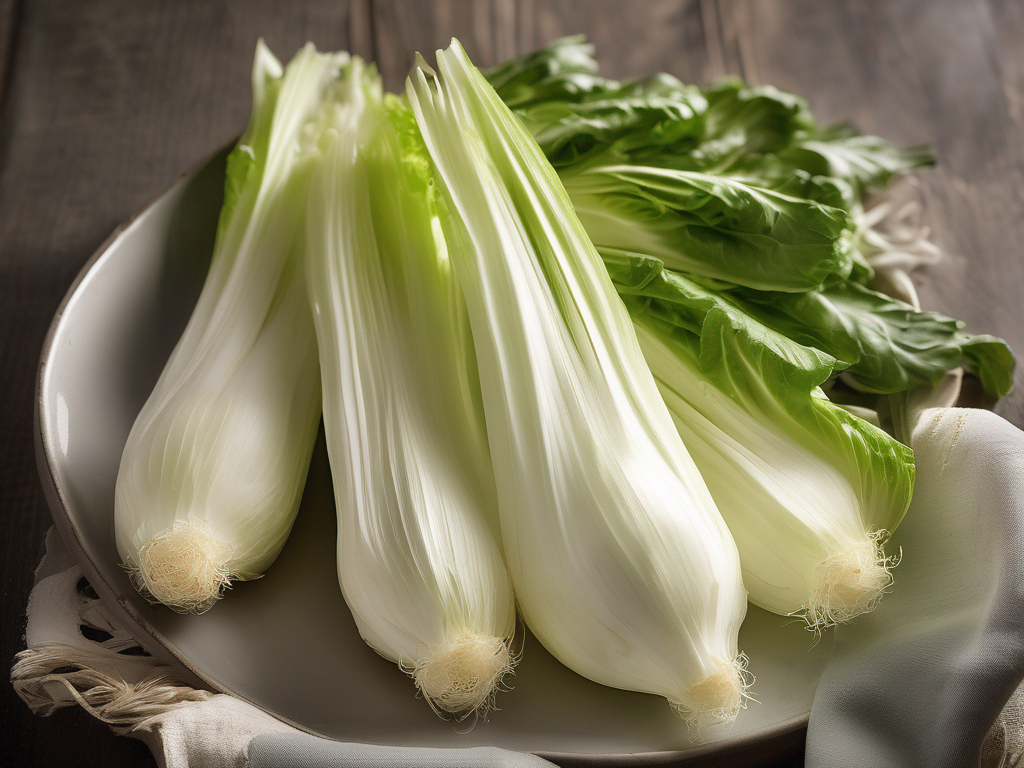
How to Tell if Endive Has Gone Bad
Get Your Free Food Safety Cheat Sheet
30 most common foods with instant answers. Print it and stick it on your fridge—completely free!
How to Tell if Endive Has Gone Bad
Endive, a leafy green vegetable with a slightly bitter taste, is a versatile ingredient used in salads, appetizers, and various dishes. Proper storage and handling of endive are crucial to maintaining its freshness and flavor. In this blog post, we will discuss how to tell if endive has gone bad and provide you with practical tips to ensure food safety. (Endive)
Understanding Endive
Endive, also known as chicory or escarole, is a member of the lettuce family and is often confused with other leafy greens like lettuce and kale. It has a crisp texture and a slightly bitter flavor, making it a popular choice for salads and side dishes. Endive is rich in vitamins and minerals, making it a healthy addition to your diet.
Signs of Spoiled Endive
Endive, like any perishable food item, can spoil if not stored properly or if it is past its prime. Here are some signs to look out for to determine if your endive has gone bad:
Visual Inspection
- Discoloration: If you notice dark spots, mold, or a slimy film on the leaves, it is a clear indication that the endive has spoiled.
- Wilting: Endive leaves should be crisp and firm. If they appear wilted or limp, the endive is no longer fresh.
- Slimy Texture: Touch the leaves gently. If they feel slimy or mushy, the endive has deteriorated.
Smell Test
- Unpleasant Odor: Fresh endive should have a mild, earthy scent. If you detect a foul or off-putting odor, it is a sign that the endive is no longer edible.
Taste
- Bitterness: While endive naturally has a slightly bitter taste, spoiled endive may have an overpowering bitter or off-flavor.
Proper Storage of Endive
To prolong the shelf life of endive and prevent it from spoiling prematurely, follow these storage tips:
-
Refrigeration: Store endive in the crisper drawer of your refrigerator. Place it in a perforated plastic bag or wrap it in a damp paper towel to retain moisture.
-
Temperature: Keep the temperature of your refrigerator between 35-40°F (1-4°C) to maintain the freshness of the endive.
-
Separation: Store endive away from fruits that release ethylene gas, such as apples and bananas, as it can accelerate the ripening process and cause endive to spoil faster.
-
Avoid Moisture: Excess moisture can cause endive to wilt and decay quickly. Ensure the leaves are dry before refrigerating them.
Best Practices for Handling Endive
In addition to proper storage, following these best practices can help you maintain the quality of your endive:
-
Wash Before Use: Rinse endive under cold running water just before using it to remove any dirt or debris.
-
Use Fresh: Use endive within a few days of purchase for the best flavor and texture.
-
Trim as Needed: If you notice any wilted or damaged leaves, trim them off before using the endive in your recipes.
Conclusion
By understanding the signs of spoiled endive and practicing proper storage and handling techniques, you can enjoy fresh and flavorful endive in your meals. Remember to inspect your endive visually, check for any off-putting odors, and taste a small piece if in doubt. Following these guidelines will help you make the most of this nutritious and delicious leafy green vegetable. (Endive)
Authoritative Food Safety References
These agencies and university labs inform every tip and health precaution we publish.
USDA FoodKeeper – Cold Storage Guidelines
Official refrigerator, freezer, and pantry timelines maintained by the U.S. Department of Agriculture.
Visit USDA FoodKeeperFDA Produce Safety Rule & Grower Guidance
Field-to-fridge handling practices that prevent contamination of fruits, vegetables, and leafy greens.
Visit FDA Produce SafetyCDC Foodborne Illness Prevention Hub
Surveillance-backed guidance on pathogens, symptoms, and steps to reduce foodborne illness risk.
Visit CDC Food SafetyUC Davis Postharvest Technology Center
University research detailing optimal storage atmospheres for produce after harvest.
Visit UC Davis PostharvestPenn State Extension – Home Food Preservation & Safety
Peer-reviewed extension bulletins on safe canning, chilling, and reheating practices.
Visit Penn State ExtensionGet Your Free Food Safety Cheat Sheet
30 most common foods with instant answers. Print it and stick it on your fridge—completely free! Want more? Upgrade to the complete guide with 70+ foods.
Scan your food directly and get instant safety info using our AI-powered camera feature.